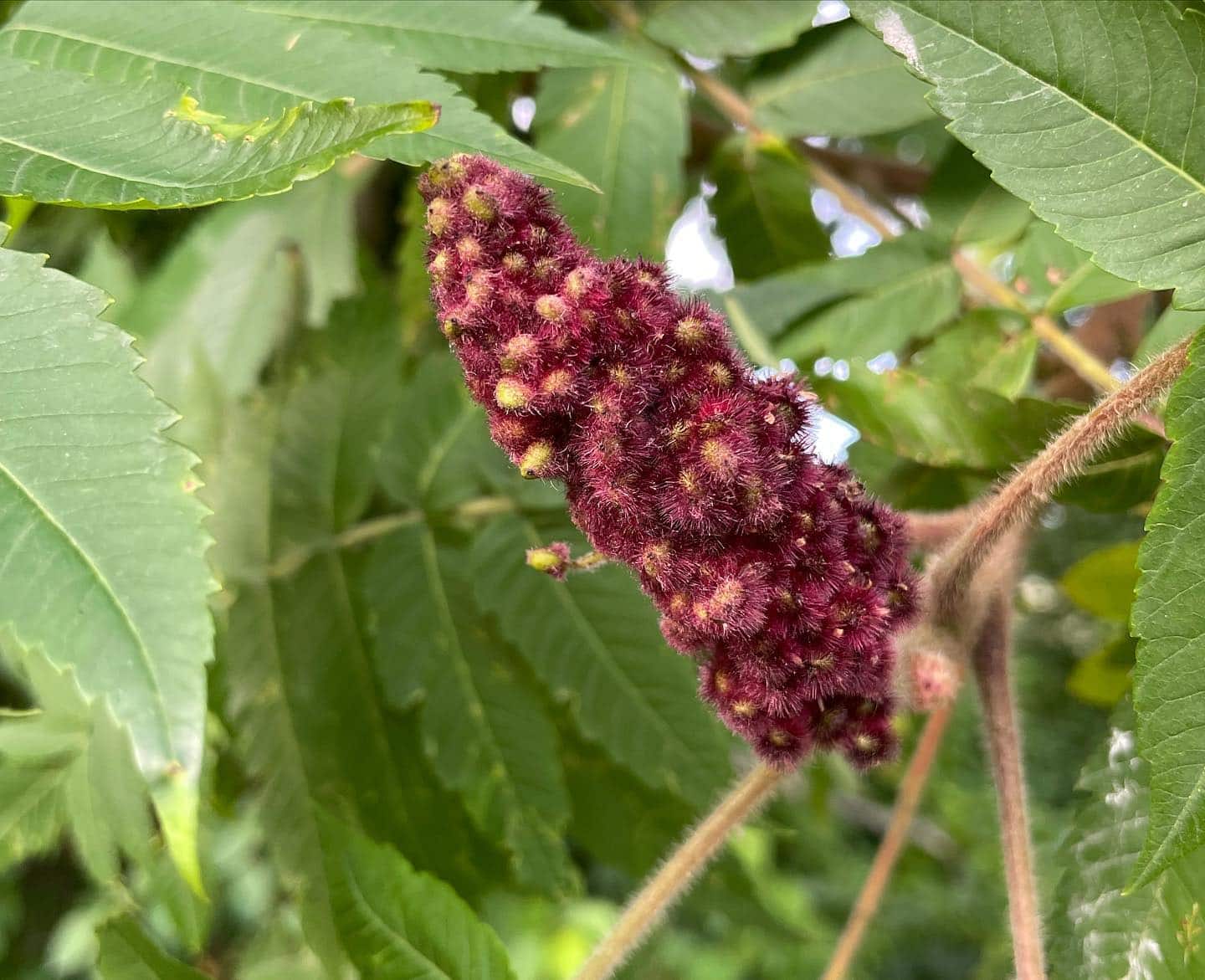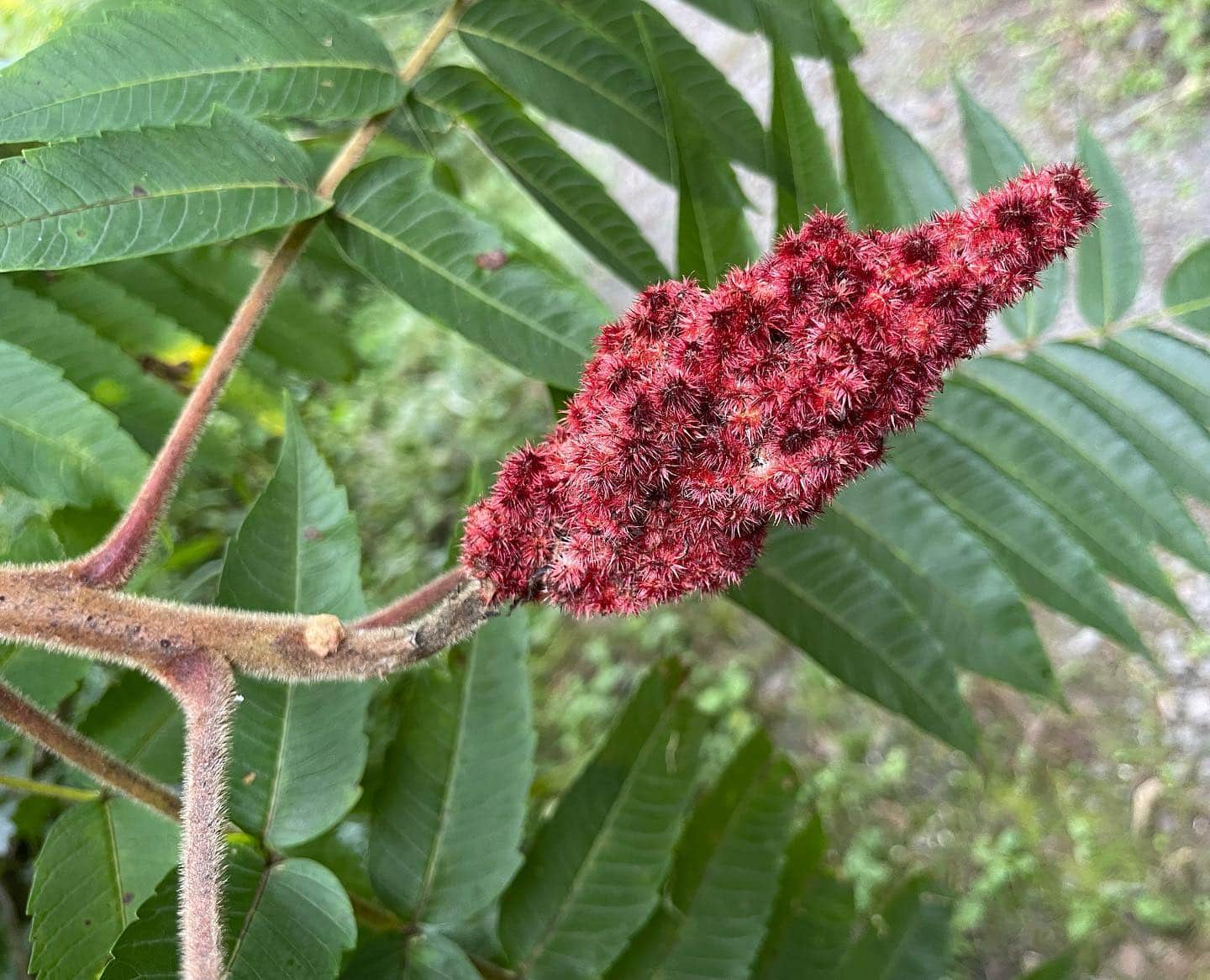Page Created by Connecticut Foraging Club
Upcoming Events | Meet the Instructors | Plant Archive | Mushroom Archive
----------------
Upcoming Events | Meet the Instructors | Plant Archive | Mushroom Archive
----------------
Staghorn sumac (Rhus typhina) is a native deciduous tree or shrub in the cashew family. It can be found in sunny areas, along highways, and at the edge of meadows.

Staghorn sumac has alternate, compound leaves with serrated edges. The leaves turn scarlet colored in autumn. The plant produces small yellow-green flowers that turn into rust-colored, fuzzy berry clusters. Young twigs will be fuzzy. The bark of older branches is grayish brown with lenticels.
Staghorn sumac berries are ripe mid to late summer when they turn rust colored. Do not harvest after rain, as the rain washes away the acids that give sumac berries their flavor.

The berries should be separated, discarding any parts with worms or black worm poop. Swish the clean berries in room temperature water. Hot water should be avoided as the seeds and stalks contain bitter alkaloids that are extracted with hot water.
Let the berries soak for at least 15 minutes, then strain through a sieve or coffee filter. This blush-colored sour liquid can be sweetened with honey for a lemonade substitute. The liquid can also be used instead of lemon juice or vinegar in cooking or added to cocktails.
The liquid can be preserved by freezing in ice cube trays and then storing in a freezer container. The berries can be preserved as a spice. Dehydrate the berries, pulse in a blender, and then sift so the fruit is separated from the seeds.

Sumac berries are high in vitamin C and malic acid. Sumac berry tea has been used medicinally to treat colds, sore throats, mild incontinence, and diarrhea.
In the spring, young shoots can be eaten raw or cooked when they are solid green. Once the inside of the twig has turned white, it is too mature for culinary use.
Staghorn sumac must be differentiated from Poison sumac (Toxicodendron vernix), which causes rashes when touched. Poison sumac leaves are hairless, shiny, and have smooth margins. Poison sumac berries are white and hang down from the branch like grape clusters. Poison sumac tends to inhabit swamps and rarely grows in dense clusters like Staghorn sumac does.
--
Written by Amy Demers, founder of the Connecticut Foraging Club. To learn more about foraging in Connecticut, check out our upcoming classes.






